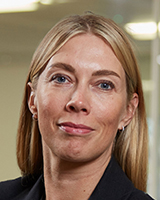The digitalisation of the bioeconomy will provide opportunities for operators and ICT providers
The bioeconomy is one of the EU’s largest and most important sectors; it has an annual turnover of EUR2 trillion and employs 18 million people.1
The bioeconomy encompasses areas such as agriculture, forestry and fishery (Figure 1), and provides essential products (such as food and energy) to an increasing population. In addition, the sector offers bioenergy and bio-based products that could be used as alternatives to fossil-based options. The bioeconomy is therefore vital for solving global challenges related to resource efficiency and sustainability. It is currently undergoing a rapid digital transformation, but it has only recently begun to catch the attention of operators and ICT providers.
Figure 1: Overview of the areas that make up the bioeconomy
![]()
Source: Analysys Mason, 2019
In order to unlock the full potential of the digital transformation of the bioeconomy, several aspects need to be considered, including connectivity development, data security, competence and acceptance among users. Analysys Mason is co-ordinating a project on behalf of the Nordic Council of Ministers with the aim of facilitating the digital transformation of the Nordic bioeconomy. The results from the first part of the project, including an analysis of the aspects of the digitalisation that have a strategic relevance for the competitive Nordic bioeconomy, were presented at the ministers’ meeting in 2018. The second part of the project is focused on enhancing the digital transformation of the Nordic bioeconomy through knowledge exchange and collaboration between test and demonstration facilities (also known as ‘testbeds’). These testbeds bring together stakeholders from the private and public sectors and provide opportunities to develop, test and commercialise new digital technologies and services for the agriculture and forestry sectors.
Narrowband IoT and autonomous vehicles will support data collection in the agricultural sector
Ericsson and Telia, together with players from various other disciplines, are supporting a testbed in Sweden with the aim of developing digital solutions for the agricultural sector. These solutions include decision support systems and new autonomous vehicles, and will contribute to enhanced profitability and sustainability in the sector.
Narrowband IoT (NB-IoT) will be used to collect quality-assured data from the fields that form the testbed. The data gathered will include the nutrition content of the soil, the level of moisture at various depths of the soil, the precipitation level over time and the temperature in the fields. In addition, connected working vehicles will supply information about aspects that are vital to farming, such as energy usage and the amount of nutrients and plant-protecting chemicals that are used on the fields.
The data that are gathered from the fields using the NB-IoT network will be managed by a cloud service that is linked to systems that provide open data, such as the Swedish Meteorological and Hydrological Institute and the Swedish Board of Agriculture. After collating and analysing the information, the results will be used to provide feedback and decision support for farmers, and to provide input data for the autonomous vehicles that are performing driverless operations in the fields (Figure 2).
Figure 2: Illustration of the technologies deployed in the testbed
![]()
Source: Analysys Mason, 2019
Issues related to digital security, standardisation and connectivity coverage need to be addressed before deployments can be enabled at scale
The rapid digital development in the bioeconomy raises important questions related to digital security and the harmonisation of systems and standards, for example. Moreover, such developments place great demands on connectivity coverage and connectivity management. These are areas that need to be addressed in order to enable deployments at scale, and various players will need to be involved, including both public and private organisations.
The telecoms sector has an important role to play here; it can provide knowledge, technologies and the connectivity needed to realise the future use cases in the bioeconomy. This could include the customisation of cellular IoT and IoT platforms, as well as the roll-out of 5G. Agricultural and forestry businesses are often remotely located, so there will be a number of challenges related to coverage and connectivity management.
Analysys Mason has been involved in several projects related to the bioeconomy, including assignments for the Nordic Council of Ministers and associated organisations (such as Nordic Forest Research and Nordic Agri Research). Analysys Mason is ideally positioned to help operators and ICT providers to explore this untapped market, having developed an extensive network and in-depth knowledge of the challenges and opportunities linked to the bioeconomy. For further advice, please contact Maria Tunberg, Principal, Consulting.
1 European Commission (2018), A new bioeconomy strategy for a sustainable Europe. Available at https://ec.europa.eu/research/bioeconomy/pdf/ec_bioeconomy_actions_2018.pdf#view=fit&pagemode=none
Downloads
Article (PDF)Authors


